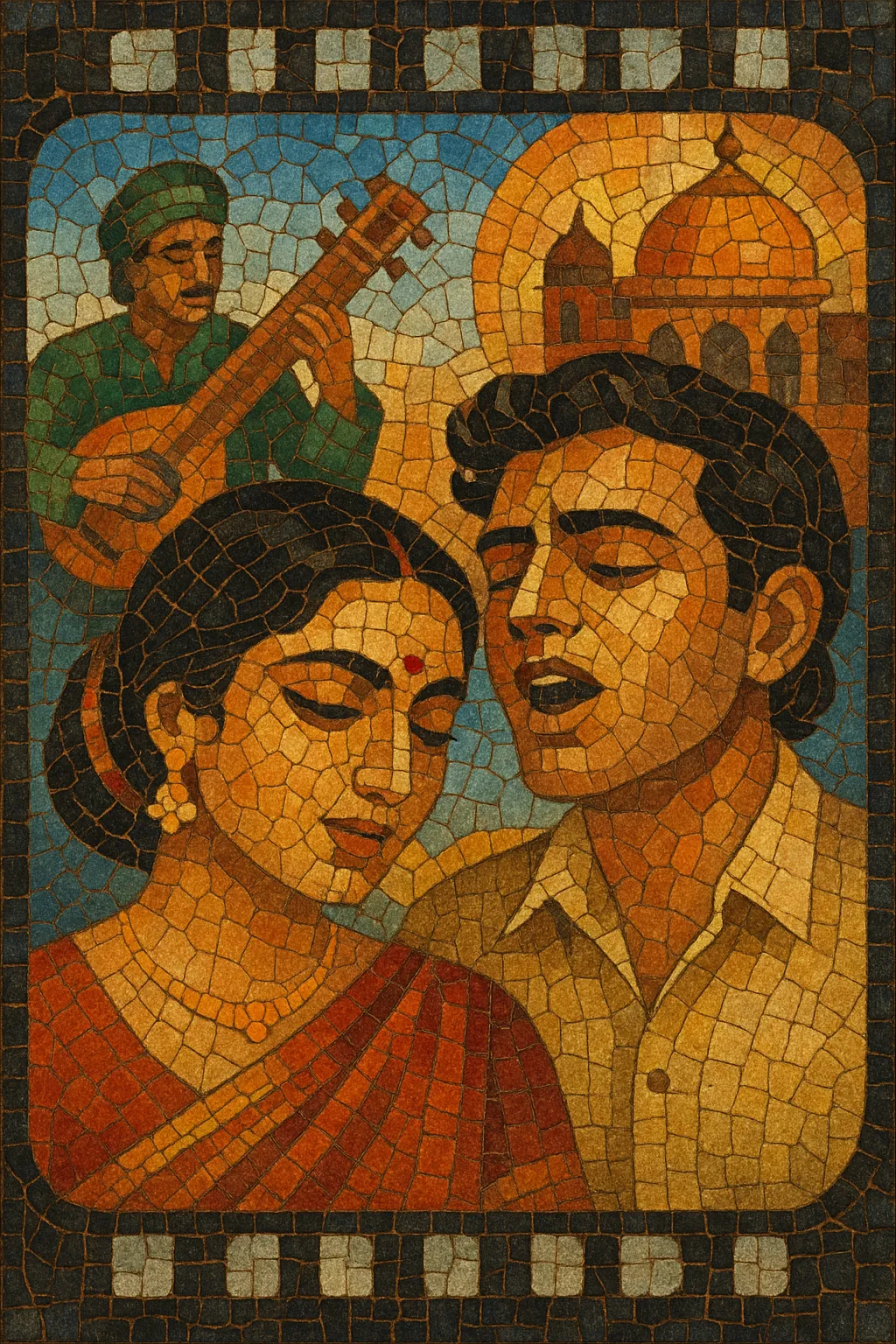Filmi is the song tradition of Indian cinema, encompassing Hindi, Tamil, Telugu, Bengali, and other regional film industries. It is built for on-screen storytelling and "playback" singing, where actors lip-sync to pre-recorded vocals.
Stylistically, filmi blends raga-informed melodies from Hindustani and Carnatic classical music with Indian folk forms, devotional currents (ghazal, qawwali, bhajan), and an evolving palette of Western popular idioms—big band, jazz, rock, disco, synth-pop, and EDM. Arrangements often feature lush orchestration, prominent melodic hooks, and dramatic modulations, supporting narratives of romance, devotion, comedy, and spectacle.
As one of the most-heard musical practices in South Asia and its diaspora, filmi has defined the sound of commercial Indian culture for nearly a century while continually adapting to technology, audience taste, and cross-cultural exchange.
With the advent of sound in Indian cinema, songs became central to narrative filmmaking. Alam Ara (1931) ushered in the talkie era, and studios like New Theatres (Kolkata) cultivated a style that fused Hindustani/Carnatic traditions with theatrical song. Playback singing—allowing trained vocalists to sing for screen actors—was standardized by the mid-1930s, rapidly professionalizing the craft.
Filmi matured into a sophisticated song tradition. Composers such as Naushad, Shankar–Jaikishan, S. D. Burman, and C. Ramchandra created raga-tinged melodies with orchestral color, while legendary playback singers—Lata Mangeshkar, Mohammed Rafi, Asha Bhosle, Mukesh, Talat Mahmood, and Manna Dey—set vocal benchmarks. Urdu-Hindi poetic diction, ghazal and qawwali inflections, and Western harmony broadened the idiom.
R. D. Burman, Kalyanji–Anandji, and Bappi Lahiri integrated rock, funk, and disco, aligning with changes in youth culture and dance-centric choreography. In the South, Ilaiyaraaja revolutionized Tamil film music with intricate orchestration, folk-classical synthesis, and early adoption of electronic instruments, influencing practice nationwide.
A. R. Rahman popularized digital production, ambient textures, and genre-hopping scores that traveled globally. Music videos, satellite TV, and CDs/MP3s expanded reach; lyric languages diversified alongside pan-Indian casting, while regional industries (Tamil, Telugu, Malayalam, Kannada, Bengali) developed distinct yet interconnected filmi idioms.
Platforms and social media accelerated single-driven releases, remixes, and crossovers with hip hop, EDM, and indie scenes. Filmi remains a primary vehicle for India’s popular song, balancing raga-based melody, lyric-driven storytelling, and contemporary production aesthetics.


